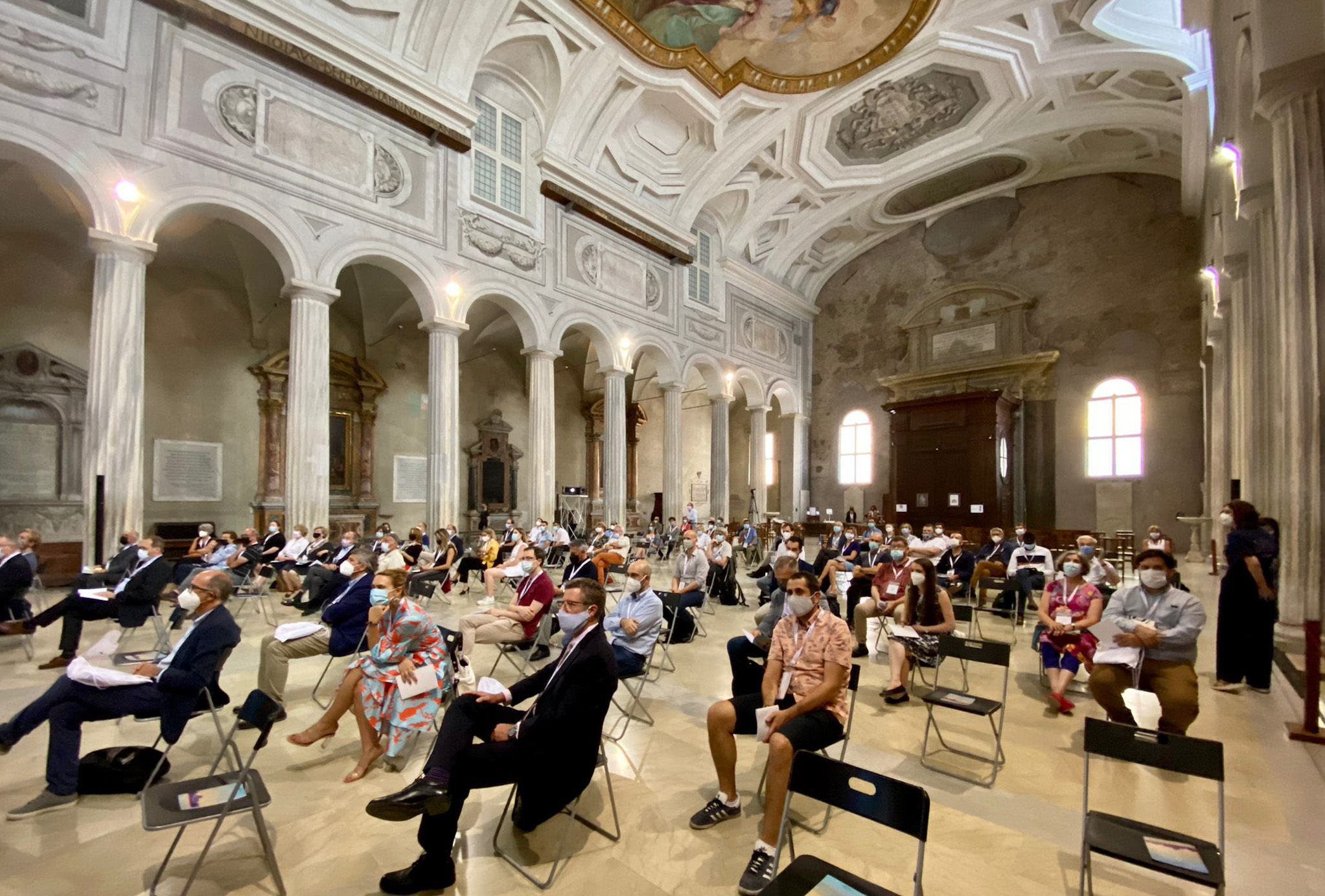Corporate social responsibility (CSR) is an increasing part of corporations’ business strategies. As transparency in business practices grows and the expectations of customers and consumers change, the inclusion of corporate social responsibility policies is far more commonplace.
The depth and detail of these policies can vary, from employee voluntary schemes to ethical raw material sourcing. Often they have a more environmental bent with widespread green initiatives such as recycling, green energy consumption or fleet car fuel efficiency.

Growing advocacy
However, while companies and organisations may be improving business practices at their own headquarters, in their factories or offices, do they apply the same ethical rigour when it comes to conferences, events and external meetings? And how does Asia compare with the rest of the world in this area of CSR?
Anjna Nihalani, director of brands and communications at the Suntec Singapore International Convention and Exhibition Centre, says: “It has often been said that CSR activities are in the infant stage here in Asia. There is also a misconception that CSR is equivalent to philanthropy. However, with the growing emphasis on ‘green’ [practices] and sustainability, CSR has started to evolve and gain traction, and businesses are recognising the value of CSR.
“In recent years, we have seen many organisations, ranging from government agencies to NGOs, companies to large multinational corporations, as well as small-medium enterprises (SMEs), adopting a greener approach. Here in Singapore, the government is helping promote good CSR practices by publicly endorsing and supporting CSR efforts through programmes such as the Green Mark Scheme for buildings, an initiative to push sustainability in the building sector. Numerous initiatives have also been launched to advance the CSR agenda including the setting up of the Singapore Compact for Corporate Social Responsibility (a multi-stakeholder platform to promote collaboration),” Nihalani says.
In Australia, Inge Garofani of the Australian Business Events Council says that CSR is evolving at a slow but steady pace. “It has been a strong focus for the industry for some time, and when comparing our progress with other industries, we are well advanced in our management and practice of CSR. Most venues in Australia have a CSR policy, and so do many of the major conference and event management companies. In some part, this has been driven by the clients who, over time, have demanded a greater focus and strong CSR policy. Destinations without the CSR policy or focus are finding increasingly that the tender process requires it – so if they wish to succeed they need to start focusing on CSR,” she adds.
Time issues
A substantial increase in awareness of the role of CSR in putting together convention programmes – from a client and venue perspective – does not mean it is always easily accommodated. In Malaysia, Sarawak Convention Bureau (SCB) chief executive Jill Henry agrees that CSR elements are becoming more common, but she qualifies her statement.
“From our perspective, we see a steadily increasing demand for CSR elements in both convention and corporate programmes, however, there is still a reluctance to commit the amount of time and effort required to integrate larger groups into active participation in CSR activities. For larger groups, the logistics of participative programmes are a challenge, particularly in remote rural locations,” Henry observes.
Besides the size of group, the amount of time dedicated to a CSR element is an issue. Time and budgetary pressures mean for many events, the focus is on reducing the length of a programme rather than adding extra elements into it. But while reducing the time associated with CSR might be one consideration, it is widely accepted that most benefit comes after a deep engagement lasting several days.
“Naturally, the longer and more involved the physical interaction, the more meaningful the experience will be for participants. This is why volunteer tourism projects are usually at least a week long with different volunteers joining regular programmes. However, meeting planners are juggling many priorities in setting their programmes, and their delegates often cannot afford to take extra time away from their businesses. In fact, meetings are becoming shorter not longer – so the half-day CSR programme is here to stay and will remain a popular choice,” says Henry.
She suggests that if time constraints mean a half-day element is the norm, the impact can be improved with a follow-up after the activity. “For example, in the orangutan adoption programme, the ongoing communication and updates on their rehabilitation are often more meaningful than the actual short, one-day ‘behind the scenes heart-to-heart’ cleaning and food preparation activities.”
Sarawak’s heart-to-heart with orangutans offers delegates the chance to encounter Borneo’s endangered species close up. Delegates can work with the keepers at the Matang Wildlife Centre who ensure these forest inhabitants do not become extinct. Another of its programmes, “Habitat for Humanity”, involves delegates helping build clinics, school buildings and other facilities for the poor communities of Sarawak.
And despite the aforementioned pressure on budgets, Henry says there is a high take-up of the CSR elements that SCB always recommends as part of its bids for events and conferences. But she admits, “even with simple – easy to opt for – green meeting suggestions, when they add to the cost for the meeting fees, they may not all be taken up by organisers”.
Deep in the trenches
Nihalani believes “green is the new black” when it comes to CSR and sustainability trends. So Suntec’s CSR initiatives in this area have included recycling efforts, sourcing and buying corporate gifts that support a social cause, Fairtrade and eco-friendly products.
One example in this area is when The United Nations Environment Programme (UNEP) and the United Nations Global Compact held its global business summit for the Environment (B4E) at Suntec Singapore in April 2008. Focusing on global economic and financial impacts of environmental concern, delegates learnt best practice for identifying and managing climate change risks and explored practical solutions available. So Suntec made sure that its own environmental policy of the 3Rs – reduce, reuse, recycle – was in full flow for B4E so that combined environmental policies and programmes were in force.
Looking for a good fit and connecting the CSR elements of a conference programme with a company’s own policies is still paramount. But contact-oriented activities remain popular as a way of connecting the delegates with the location of their meeting/conference, and are a hit, particularly, with international meeting planners coming to Asia for the first time.
“Originally, we were offering programmes for delegates to recycle their convention bags, giving out event souvenirs that were crafted by local communities, or even adopting a local school. While these are still popular, meeting planners prefer to integrate an experience into their convention itinerary or develop a specific pre- or post-convention activity that involves their own members undertaking active CSR programmes,” says Henry. “For example, if the delegates have a medical skill, they may choose to do an outreach sharing their skills with local practitioners or treating needy community patients.”
One example of this from Down Under was when a group of dentists attending the Australian and New Zealand Society of Paediatric Dentistry Conference held in Central Australia in August visited the Mutitjulu Community to educate local children on dental care and give out dental kits.
Garofani adds: “I believe that as there are more and more activities being developed and undertaken, the issue is to ensure they are valuable for the local area and not being done for the sake of entertainment or ‘feel good’ motivations.”
The long-lasting benefit to communities does depend on the activity; donations might bring immediate short-term benefit but construction activity, beach cleaning and tree planting – to name a few – will provide impact in the longer term. Ultimately, any CSR activity that results in delegates helping local communities, extending and sharing their knowledge and even building long-term relationships with community projects – never mind taking away a memorable and lasting experience – has to be encouraged. n
Top tips
- Research the aims and objectives of the society or company to make sure programmes are tailored to their own CSR objectives
- Wherever possible make sure the group has direct contact with the beneficiaries of the programme
- Make sure it’s an experience that will live on in the memories of those taking part; this way it becomes far more meaningful than simply making a donation
- Include a follow-up after the programme so that there is ongoing communication between the participants and recipients
Charity begins at home
- CSR does not exist in a vacuum. Companies must ensure that they are being “socially responsible” during the entire stretch of their event itinerary – from beginning to end – even without a CSR component to the programme.
- Papers should be printed on recycled or farmed paper
- Minimise paper signs
- Avoid using disposable cutlery
- Drinks can be served in china or glasses
- Reduce the number of cut flowers
- No individual packaging
- Condiments should be served in containers (eg no sugar sachets)
- Adjust air-conditioning thermostat controls to 24-26 degrees Celsius
- Make sure that landscape and external lights are controlled by a timer
- Consolidate and reuse materials to minimise waste
- Incorporate strategic placement of recycling bins throughout the facility for delegates’ use
- Support the use of environmentally friendly paper product brands for toilet paper and tissues
- Use biodegradable or environmentally friendly cleaning agents
Source: Suntec Singapore

Fun run for a cause
When the Amway Greater China Leadership Seminar was held in Melbourne in April 2008, more than 7,200 delegates attended in four separate waves. The Melbourne Convention and Visitors Bureau estimates that total delegate expenditure reached A$18.6 million (US$19.9 million). But this was more than just a large event bringing in business to Melbourne – Amway China left a legacy.
The company hosted a Fun Run around the Royal Botanic Gardens which delegates could take part in if they wished. Each participant was asked to contribute A$10 (US$10.7) which was donated to a Melbourne children’s charity, Berry Street.
With more than 5,700 people taking part in the Fun Run a total of A$57,720 (US$61,662) was raised for the charity, which was put towards its education programmes for disadvantaged children.
Source: A soon-to-be-released Case Study Booklet commissioned by BECA


